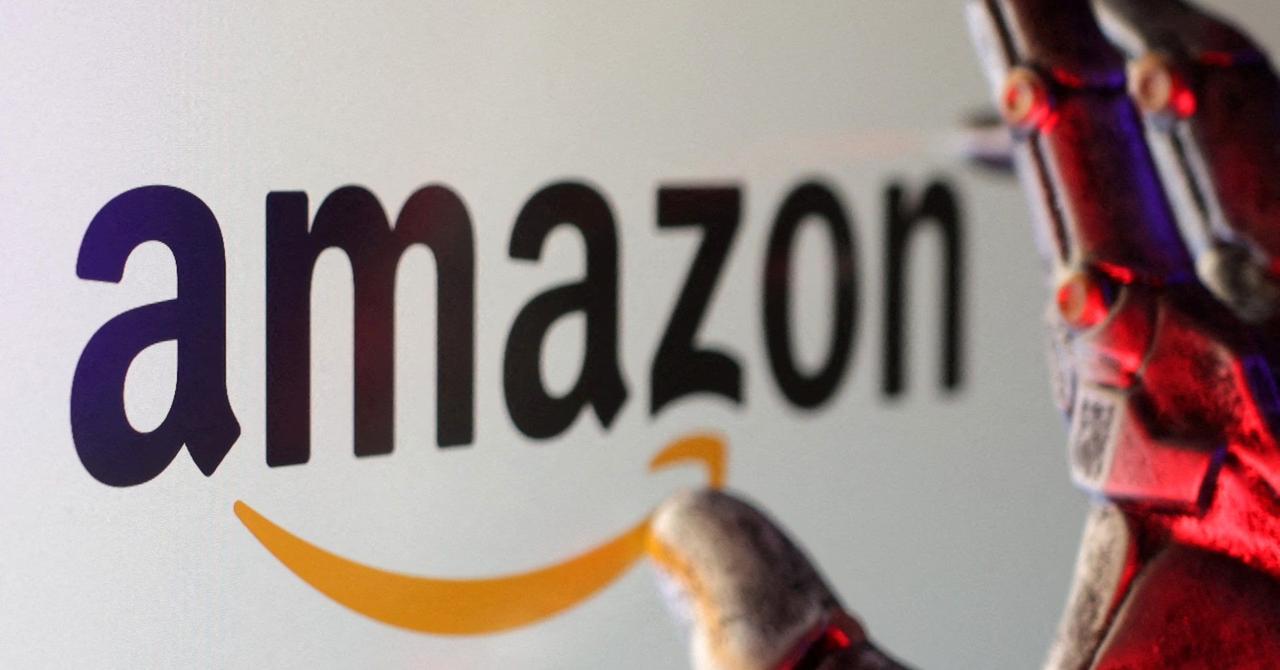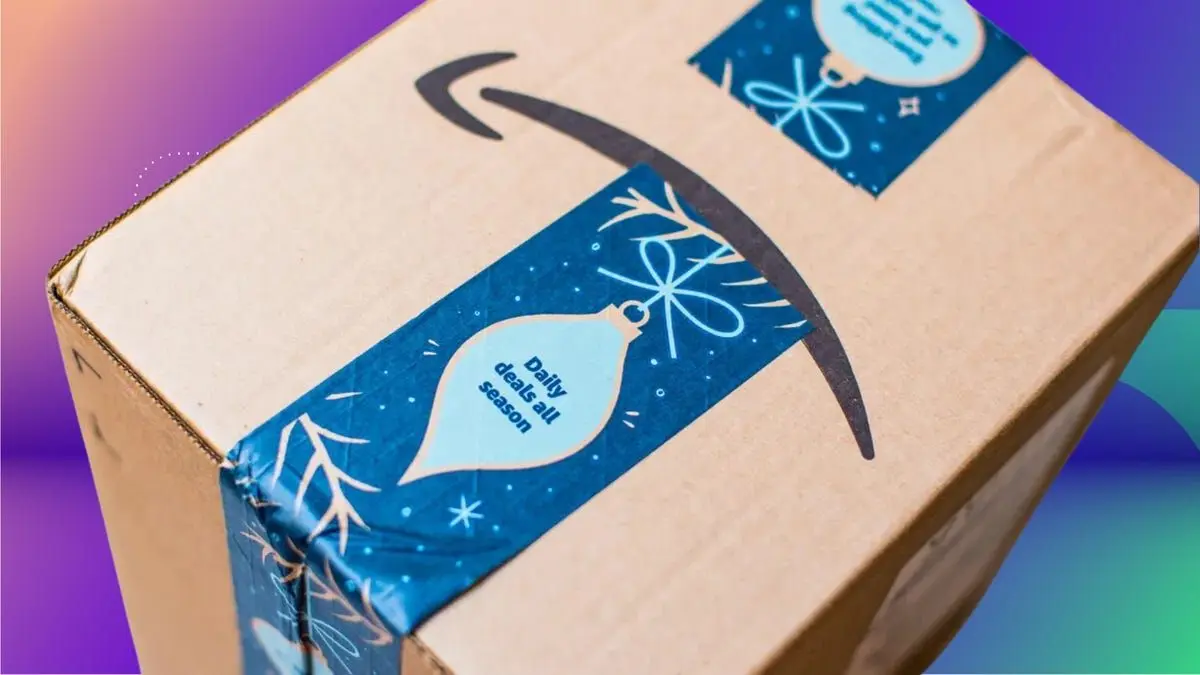Amazon Unveils AI-Powered VAPR System to Revolutionize Package Delivery Efficiency
7 Sources
7 Sources
[1]
Amazon Launches AI Tool to Speed Up Package Searches for Drivers
This AI tool is designed to help delivery drivers quickly locate packages within their vans using computer-vision technology Amazon.com Inc. has introduced a new artificial intelligence tool aimed at streamlining the package delivery process for its drivers. This AI-driven technology, called Vision Assisted Package Retrieval (VAPR), is designed to help drivers quickly locate the correct packages within their vans at each stop, reducing the time spent rummaging through crowded cargo areas. VAPR utilizes advanced computer-vision technology that was initially developed in Amazon's warehouses. This system identifies products without the need for barcode scanners and has now been adapted for use in the confined spaces of delivery vans. The new tool projects a green circle on packages meant to be delivered at a stop and red Xs on those intended for later deliveries. This visual cue enables drivers to simply "grab and go," cutting down on the time spent sorting through packages. Amazon announced this development at a media event in Nashville focused on the company's logistics and online shopping operations. VAPR has been in development since 2020 and is set to be deployed in 1,000 delivery vans next year. The tool is expected to reduce the typical delivery route time by around 30 minutes, the company said. According to Amazon, this new system will eliminate the need for delivery drivers to manually organize packages, check labels, or confirm customer details such as names and addresses. Instead, drivers can rely on VAPR's green light system to quickly identify the correct packages. "This will make the process faster and simpler, allowing drivers to focus on getting deliveries completed more efficiently," Amazon said in a statement.
[2]
Amazon unveils AI to help delivery drivers find packages faster
Amazon.com Inc. unveiled a new artificial intelligence tool designed to solve a major pain point in its quick delivery apparatus: drivers rummaging through cluttered vans at each stop searching for packages. The technology projects a green circle on packages to be delivered at each stop and red Xs on those to be delivered later, Amazon said Wednesday at a Nashville media event focused on its logistics and online shopping initiatives. Called Vision Assisted Package Retrieval and in development since 2020, the tool will be deployed in 1,000 Amazon vans next year and will shorten the typical delivery route by about 30 minutes, the company said. The tool uses computer-vision technology initially developed in Amazon warehouses to identify products without using barcode scanners. The technology was adapted for vans' cramped cargo areas and integrated with delivery-route navigation software. "Delivery drivers will no longer have to spend time organizing packages by stops, reading labels or manually checking key identifiers like a customer's name or address to ensure they have the right packages," Amazon said in a release. "They simply have to look for VAPR's green light, grab and go." The announcement underscores Amazon's shifting priorities under Chief Executive Officer Andy Jassy, who assumed the role from founder Jeff Bezos in 2021. Bezos wowed the media with grandiose announcements that looked far into the future, such as fleets of autonomous delivery drones - a project still in the testing phase more than a decade after he announced it. Under Jassy, who steered the company through layoffs and shuttered dozens of moonshot projects, the focus is on near-term efforts to shave costs and make Amazon's low-margin e-commerce business more appealing to Wall Street investors prone to fret about slim profits. The Seattle-based company relies on a network of small businesses that use 100,000 vans and employ 390,000 drivers to deliver packages. By reducing delivery times, Amazon can limit what it has to pay these delivery service partners, which typically hire drivers paid by the hour.
[3]
Amazon to Deploy AI-Powered Technology That Helps Drivers Find Packages | PYMNTS.com
Amazon is preparing to roll out technology that uses artificial intelligence and lights to help delivery drivers find the packages they need in their trucks. The new solution, Vision-Assisted Package Retrieval (VAPR), has been piloted by drivers and will be included in 1,000 electric delivery vans that will be deployed by early 2025, the company said in a Wednesday (Oct. 9) press release. With this solution, drivers need only look for VAPR's green light that spotlights the right packages for each stop, according to the release. VAPR uses a form of computer vision called Amazon Robotics Identification (AR-ID) to automatically identify items, the release said. When the van arrives at a delivery location, VAPR uses audio and visual cues to let the driver know it has found the packages needed for that stop and uses automotive light projectors mounted on the roof of the vehicle to shine a green "O" light on those packages and a red "X" light on all other packages, per the release. Based on its work with drivers who piloted the system, Amazon found that VAPR reduces drivers' perceived physical and mental effort by 67% and saves more than 30 minutes per route, according to the release. "Before, it could take me anywhere between 2 and 5 minutes to empty a tote and organize packages for the next stops," Bobby Garcia, a driver with Bloomfield Logistics, said in the release. "Now, with VAPR, this whole step just takes me about a minute." The technology also facilitates more accurate deliveries, Stephen Harry, owner of Bloomfield Logistics, said in the release. Amazon said in June 2022 that AR-ID would soon replace manual scanning in its fulfillment centers and sort centers. When announcing the technology's deployment there, the company said AR-ID features AI-powered scanning capability with computer vision and machine learning technology and uses a unique camera system that runs at 120 frames per second. The company has more than 100,000 delivery vans in its fleet worldwide, according to the Wednesday press release.
[4]
Amazon's new AI system projects green and red markers onto packages to streamline deliveries
Amazon unveiled new AI technology called Vision-Assisted Package Retrieval (VAPR) for the cargo hold of its electric Rivian vans, giving drivers audio and visual cues about which packages should be delivered at a given stop. The system, announced Wednesday morning, integrates with the vehicle's navigation system to project a green "O" on packages to be delivered at a given stop, and a red "X" on all others in the back of a delivery van. This reduces the need to manually sort and organize packages between stops, according to the company. Amazon says VAPR, in the works since 2020, will be rolled out to 1,000 vans initially early next year. It's an outgrowth of an Amazon Robotics Identification (AR-ID) system originally used in the company's fulfillment centers. It's part of a larger effort by Amazon to use AI and machine learning to improve the efficiency of the 390,000 delivery drivers who work for independent Delivery Service Partners, delivering packages in Prime-branded uniforms and vehicles. In some situations, Amazon's automated routing algorithms have left those drivers scrambling to keep up. In this case, Amazon points to indications that the technology will make the job easier. Amazon says its early tests resulted in "a 67% reduction in perceived physical and mental effort for drivers and more than 30 minutes saved per route." Its announcement quotes a driver in the North Boston area saying that VAPR has reduced the time emptying totes and organizing packages between stops to about a minute, vs. 2 to 5 minutes previously. This was one of several announcements at Amazon's annual "Delivering the Future" robotics, transportation, and logistics event in Nashville on Wednesday morning. Other news included:
[5]
Amazon details new AI-powered package management system - SiliconANGLE
Amazon.com Inc. today detailed VAPR, an internally-developed artificial intelligence system designed to ease the work of its delivery drivers. The e-commerce giant relies on a fleet of about 100,000 vans to ship goods to online shoppers. After reaching a customer's home, an Amazon delivery driver must find the parcels ordered by that customer, which can take several minutes. In some cases, the driver also reorganizes the remaining packages to reduce the amount of time that will be needed to retrieve them later on. Amazon's newly detailed VAPR system is designed to speed up the process. According to the company, internal tests indicate that the technology can save drivers more than half an hour per delivery route. Additionally, the drivers who tested VAPR reported that it reduced the amount of physical and mental effort involved in their work. Usually, finding the parcel ordered by a customer requires reading the text on the packages in a van's storage compartment. VAPR spares drivers the hassle. It uses a projector to shine a green "O" on the packages that should be dropped off at a given stop and a red "X" on the other parcels. Under the hood, VAPR is based on a system called AR ID that Amazon first detailed in 2022. The latter technology helps power the company's fulfillment centers. It uses AI software and cameras to automatically scan package barcodes, which removes the need for workers to use handheld barcode scanners. VAPR also incorporates a number of Amazon Web Services service. The system is powered by AWS IoT Greengrass, which that makes it possible to run AI models and software on connected devices. VAPR also uses the Amazon SageMaker suite of tools for building machine learning applications. According to Amazon, its engineers adapted the AI models that power VAPR to the operating conditions of a delivery van. The algorithms are optimized to scan different kinds of parcels under variable lighting conditions. VAPR's hardware components, in turn, include "specially designed automotive light projectors and cameras." Amazon has connected the system to its vans' built-in navigation software. According to the company, the integration allows VAPR to detect when a van reaches a delivery spot and determine which parcels should be dropped off. Amazon plans to implement VAPR in 1,000 electric delivery vans by early 2025. The system will also become available to some of the third-party delivery companies that help the e-commerce giant ship goods to customers. Amazon detailed VAPR today alongside a new AI feature in its e-commerce marketplace's mobile client. AI Shopping Guides, as the feature is called, can automatically generate brief product descriptions to speed up research for online shoppers. It supports more than 100 product categories on launch.
[6]
Amazon Will Shine Green Light on Delivery Packages for Faster Retrieval
Amazon is calling the technology Vision Assisted Package Retrieval Amazon, in its quest for greater efficiency, has developed new systems to shave seconds off each package delivery and to help customers make faster buying choices, even for new product types that they may know little about. The company announced Wednesday it has created spotlights within its trucks to guide delivery people to packages for each stop along a route. The technology, which Amazon is calling Vision Assisted Package Retrieval, works by shining a green light on packages so that the deliverer does not have to waste precious seconds reading labels. "When we speed up deliveries, customers shop more," said Doug Herrington, CEO of Amazon worldwide stores in remarks at the event. "Once a customer experiences fast delivery, they will come back sooner and shop more." Amazon said it would equip 1,000 active delivery trucks, supplied by EV maker Rivian, with the spotlight tech early next year. Herrington said the delivery van ceilings are equipped with cameras and LED projectors that instantly read package labels so it knows which are bound for which customers. Amazon is Rivian's largest shareholder and has placed orders for 100,000 electric delivery vans to be deployed by 2030. Shares of Amazon and Rivian were up about one percent each in morning trade. The new system calls to mind a technology widely deployed in Amazon's warehouses that shines a light on items on robotically wheeled shelves so workers can pick them and put them in bins. That system replaced one that had some workers walking up to 10 miles a day pushing carts through narrow aisles to find stowed items. Shortening by a few seconds the time it takes for each package delivery means Amazon can increase the number of deliveries each worker makes in a shift. Today, Amazon said, delivery workers reach about 100 customers each day. At an event held at a warehouse near Nashville, Tennessee, Amazon also said it is using new artificial intelligence software that can reduce the need to spend minutes or hours researching new products, such as televisions and dog food. The online guides will include more extensive information, as well as recommendations, so that customers can make more informed decisions more quickly, the Seattle company said. The new feature follows one announced earlier this year putting an AI search into the main Amazon website. Called Rufus, it gives users longer answers to search queries. Separately, Amazon announced it was planning smaller warehouses attached to its Whole Foods grocery stores so that when items are not offered there customers will not be tempted to shop at competing stores. That way, shoppers could order a bottle of Pepsi while shopping at a Whole Foods, which doesn't carry the soft drink, and have that brought to them when they check out. The first such store is in Plymouth Meeting, Pennsylvania - about 15 miles north of Philadelphia - which will start offering the service sometime next year. © Thomson Reuters 2024
[7]
Amazon targets faster deliveries and buying with new tech
The technology, which Amazon is calling Vision Assisted Package Retrieval, works by shining a green light on packages so that the deliverer does not have to waste precious seconds reading labels. "When we speed up deliveries, customers shop more," said Doug Herrington, CEO of Amazon worldwide stores in remarks at the event. Amazon, in its quest for greater efficiency, has developed new systems to shave seconds off each package delivery and to help customers make faster buying choices, even for new product types that they may know little about. The company announced Wednesday it has created spotlights within its trucks to guide delivery people to packages for each stop along a route. The technology, which Amazon is calling Vision Assisted Package Retrieval, works by shining a green light on packages so that the deliverer does not have to waste precious seconds reading labels. "When we speed up deliveries, customers shop more," said Doug Herrington, CEO of Amazon worldwide stores in remarks at the event. "Once a customer experiences fast delivery, they will come back sooner and shop more." Amazon said it would equip 1,000 active delivery trucks, supplied by EV maker Rivian, with the spotlight tech early next year. Herrington said the delivery van ceilings are equipped with cameras and LED projectors that instantly read package labels so it knows which are bound for which customers. Amazon is Rivian's largest shareholder and has placed orders for 100,000 electric delivery vans to be deployed by 2030. Shares of Amazon and Rivian were up about 1% each in morning trade. The new system calls to mind a technology widely deployed in Amazon's warehouses that shines a light on items on robotically wheeled shelves so workers can pick them and put them in bins. That system replaced one that had some workers walking up to 10 miles a day pushing carts through narrow aisles to find stowed items. Shortening by a few seconds the time it takes for each package delivery means Amazon can increase the number of deliveries each worker makes in a shift. Today, Amazon said, delivery workers reach about 100 customers each day. At an event held at a warehouse near Nashville, Tennessee, Amazon also said it is using new artificial intelligence software that can reduce the need to spend minutes or hours researching new products, such as televisions and dog food. The online guides will include more extensive information, as well as recommendations, so that customers can make more informed decisions more quickly, the Seattle company said. The new feature follows one announced earlier this year putting an AI search into the main Amazon website. Called Rufus, it gives users longer answers to search queries. Separately, Amazon announced it was planning smaller warehouses attached to its Whole Foods grocery stores so that when items are not offered there customers will not be tempted to shop at competing stores. That way, shoppers could order a bottle of Pepsi while shopping at a Whole Foods, which doesn't carry the soft drink, and have that brought to them when they check out. The first such store is in Plymouth Meeting, Pennsylvania - about 15 miles north of Philadelphia - which will start offering the service sometime next year.
Share
Share
Copy Link
Amazon introduces Vision Assisted Package Retrieval (VAPR), an AI-driven tool designed to streamline package delivery by helping drivers quickly locate parcels in their vans using computer vision technology.

Amazon Introduces AI-Powered VAPR System
Amazon.com Inc. has unveiled a groundbreaking artificial intelligence tool called Vision Assisted Package Retrieval (VAPR), aimed at revolutionizing the efficiency of its package delivery process. This innovative system, developed since 2020, is designed to address a significant challenge faced by delivery drivers: quickly locating the correct packages within their vans at each stop
1
.How VAPR Works
VAPR utilizes advanced computer-vision technology, initially developed for Amazon's warehouses, to identify products without the need for barcode scanners. The system has been adapted for use in the confined spaces of delivery vans and integrated with delivery-route navigation software
2
.Key features of VAPR include:
- Projecting a green circle on packages to be delivered at the current stop
- Displaying red Xs on packages intended for later deliveries
- Using audio and visual cues to alert drivers when packages are found
- Employing automotive light projectors mounted on the van's roof
3
Benefits and Efficiency Gains
Amazon's tests have shown significant improvements in delivery efficiency:
- Reduction of typical delivery route time by approximately 30 minutes
- 67% decrease in drivers' perceived physical and mental effort
- Reduction in time spent organizing packages between stops from 2-5 minutes to about 1 minute
4
Technology Behind VAPR
VAPR is built on Amazon's existing AI infrastructure:
- Based on the Amazon Robotics Identification (AR-ID) system used in fulfillment centers
- Powered by AWS IoT Greengrass for running AI models on connected devices
- Utilizes Amazon SageMaker for building machine learning applications
- Optimized algorithms for scanning various parcel types under different lighting conditions
5
Related Stories
Deployment and Future Plans
Amazon plans to roll out VAPR in phases:
- Initial deployment in 1,000 electric delivery vans by early 2025
- Potential expansion to third-party delivery companies partnering with Amazon
- Integration with Amazon's fleet of about 100,000 vans and 390,000 drivers employed by Delivery Service Partners
2
5
Implications for Amazon's Business Strategy
The introduction of VAPR aligns with Amazon's shifting priorities under CEO Andy Jassy:
- Focus on near-term efforts to reduce costs and improve e-commerce profitability
- Emphasis on practical innovations that address immediate operational challenges
- Potential for reducing payments to delivery service partners by improving efficiency
2
As Amazon continues to innovate in its logistics operations, VAPR represents a significant step towards enhancing delivery efficiency and driver experience, potentially setting new standards in the e-commerce industry.
References
Summarized by
Navi
[1]
[2]
[4]
Related Stories
Recent Highlights
1
Meta acquires Manus for $2 billion, adding revenue-generating AI agents to its platforms
Business and Economy

2
Nvidia locks in $20 billion Groq deal, securing AI chip rival's technology and talent
Business and Economy

3
Geoffrey Hinton warns AI job replacement will accelerate in 2026 as systems gain new capabilities
Technology








